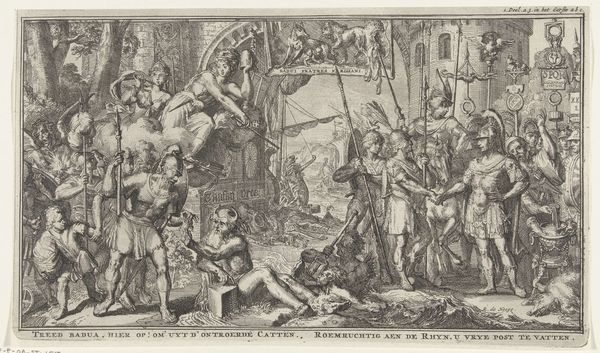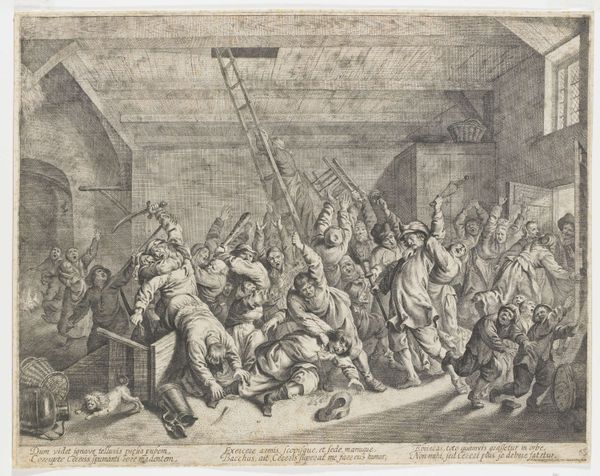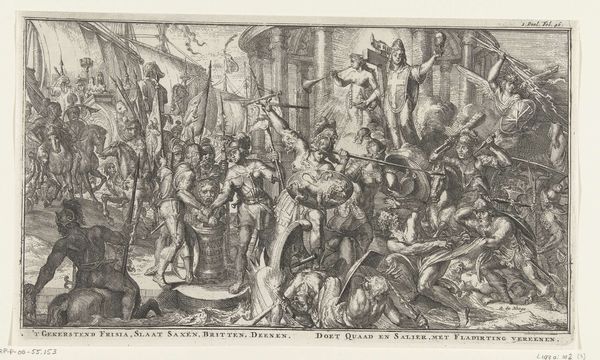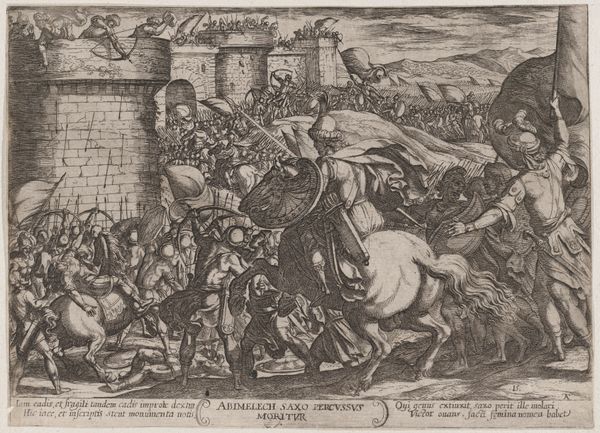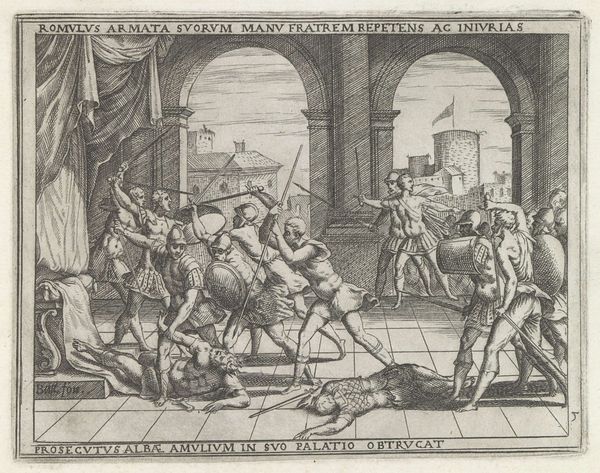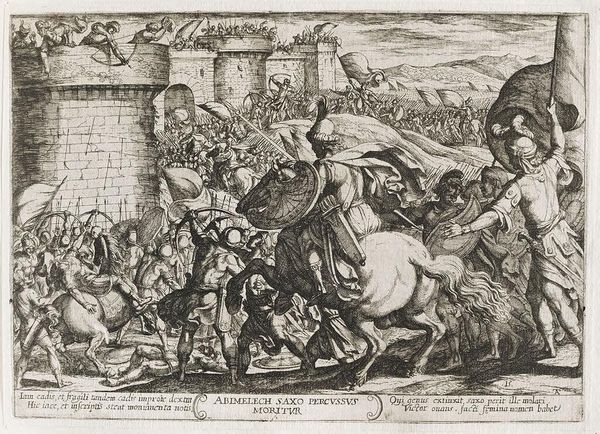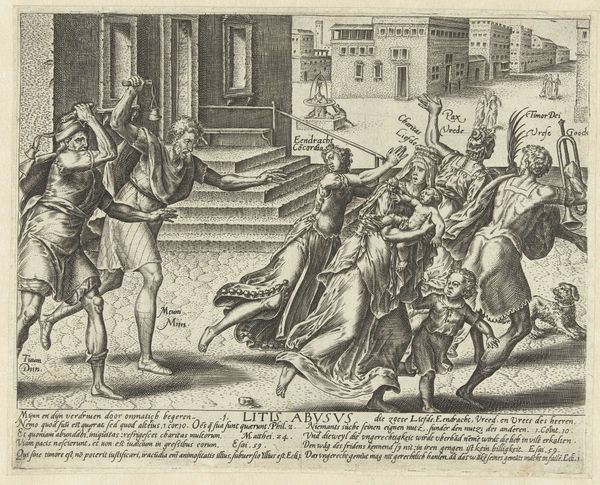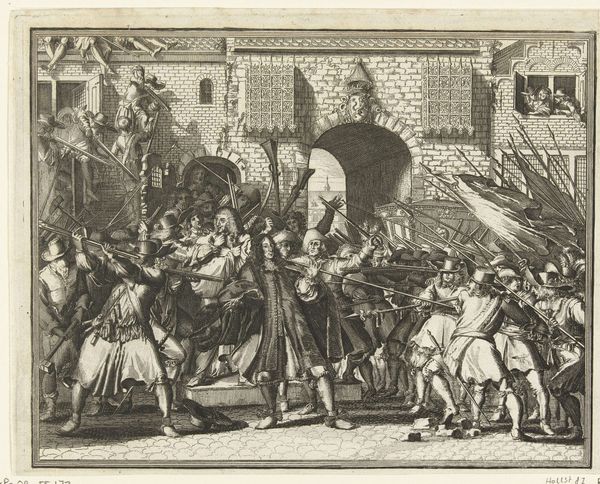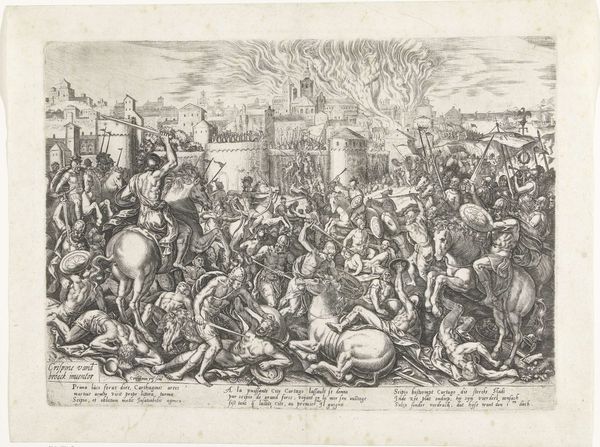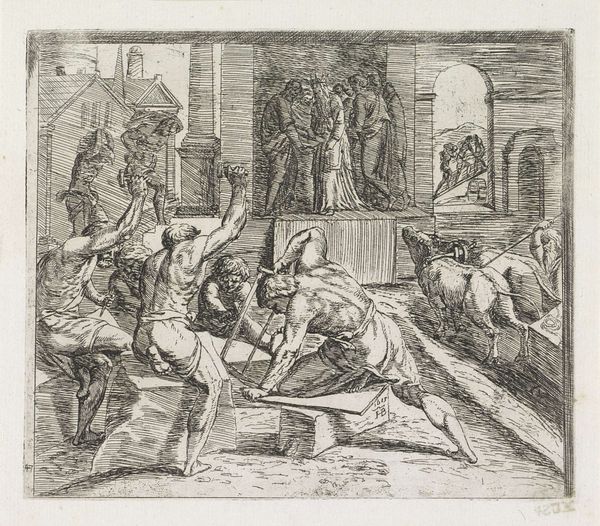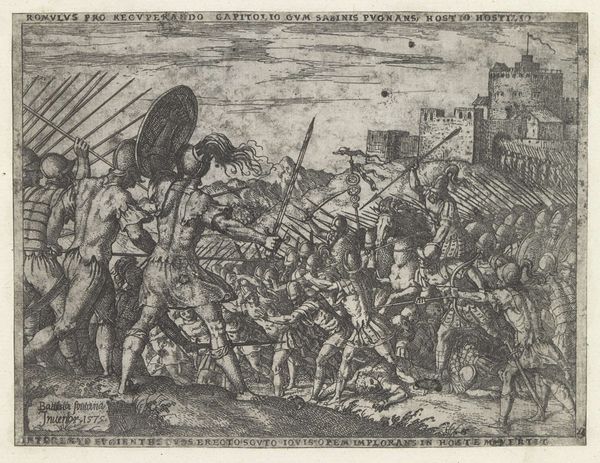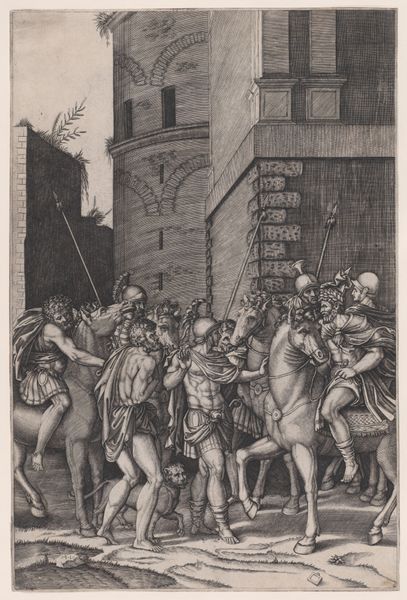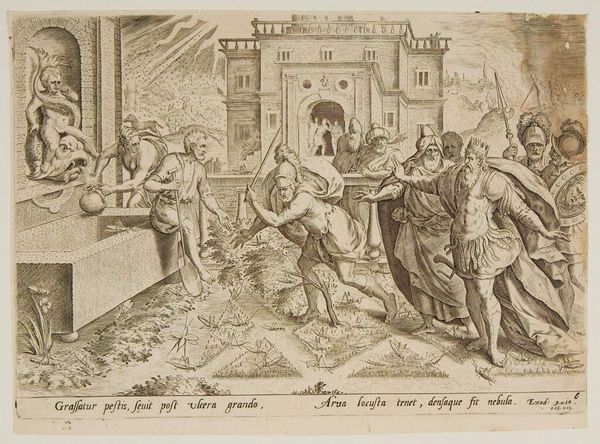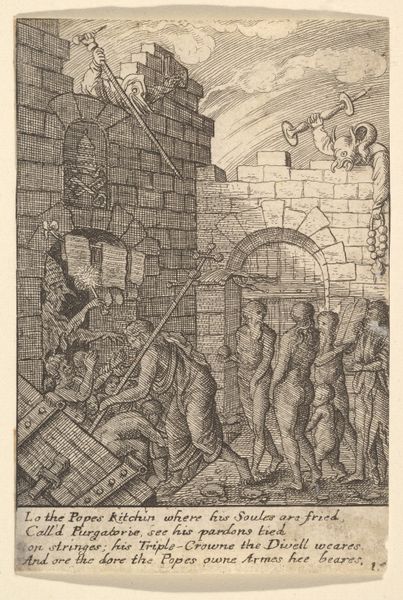
print, engraving
#
narrative-art
#
pen drawing
# print
#
figuration
#
line
#
history-painting
#
italian-renaissance
#
engraving
Dimensions: height 135 mm, width 180 mm
Copyright: Rijks Museum: Open Domain
Curator: Giovanni Battista Fontana created this print, "Romeinse soldaten vallen Crustumerium binnen," sometime between 1572 and 1573. It resides here at the Rijksmuseum. Editor: My initial impression is that it’s overwhelmingly chaotic. A sense of crowded conflict practically spills out from the engraving. The figures tumble, their poses rendered with sharp lines—quite violent. Curator: Note how the arches themselves act as a symbolic framing device. They're not just architectural; they emphasize the threshold between the known and the invaded, mirroring the transition from order to chaos. Observe how Roman ideals clash with the subjugated populace. Editor: Right. Structurally, the eye jumps between the archways, forced to compare and contrast the active battle on the left with what looks like the immediate aftermath on the right. The use of line, densely packed, builds that oppressive atmosphere. There's very little respite for the eye. Curator: And it draws the viewer into the event. Fontana is not merely depicting an event; he's using visual shorthand to portray the broader implications of Roman expansion. Think about the symbols inherent in warfare, dominance, and submission. It represents the subjugation not only of a city but of its very cultural identity. Editor: Certainly. It is a statement about power dynamics. There’s a strong verticality due to the lances which counteracts the horizontality of the fallen bodies and breached walls. It's all meticulously constructed to underscore who’s on top. Curator: Absolutely. Through careful examination, we uncover how historical events often become imbued with greater meanings—reflections of our own evolving perceptions of power, conflict, and cultural shift. Editor: Agreed. The engraving's strength lies in its ability to evoke, even through its dense formalism, a powerful meditation on the brutal realities of conquest.
Comments
No comments
Be the first to comment and join the conversation on the ultimate creative platform.
